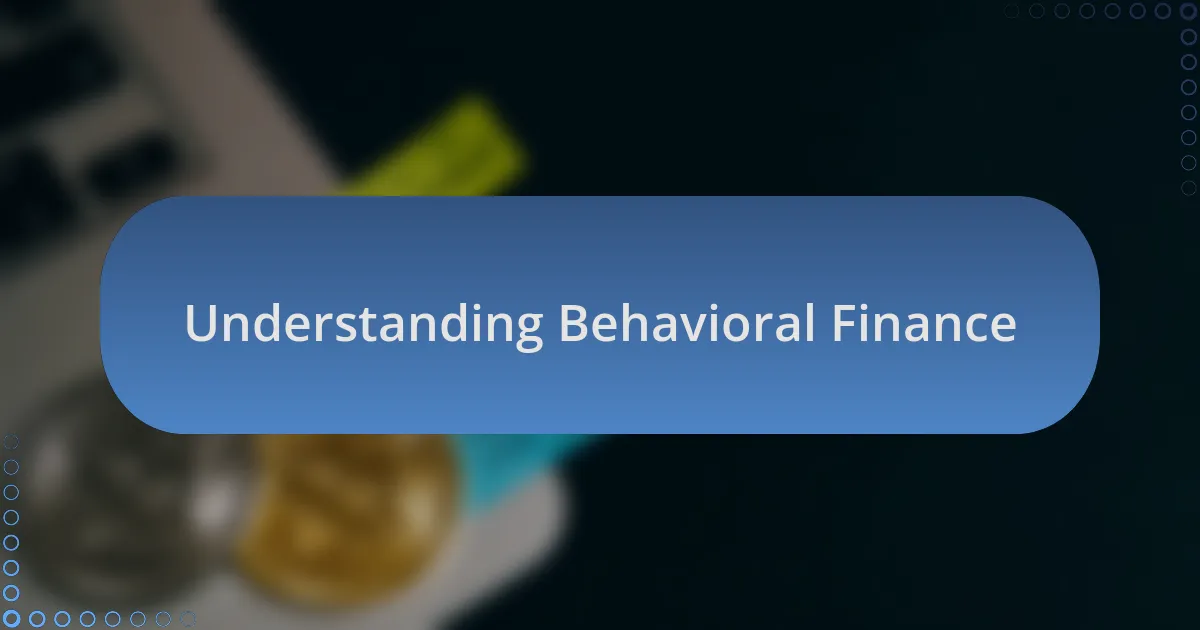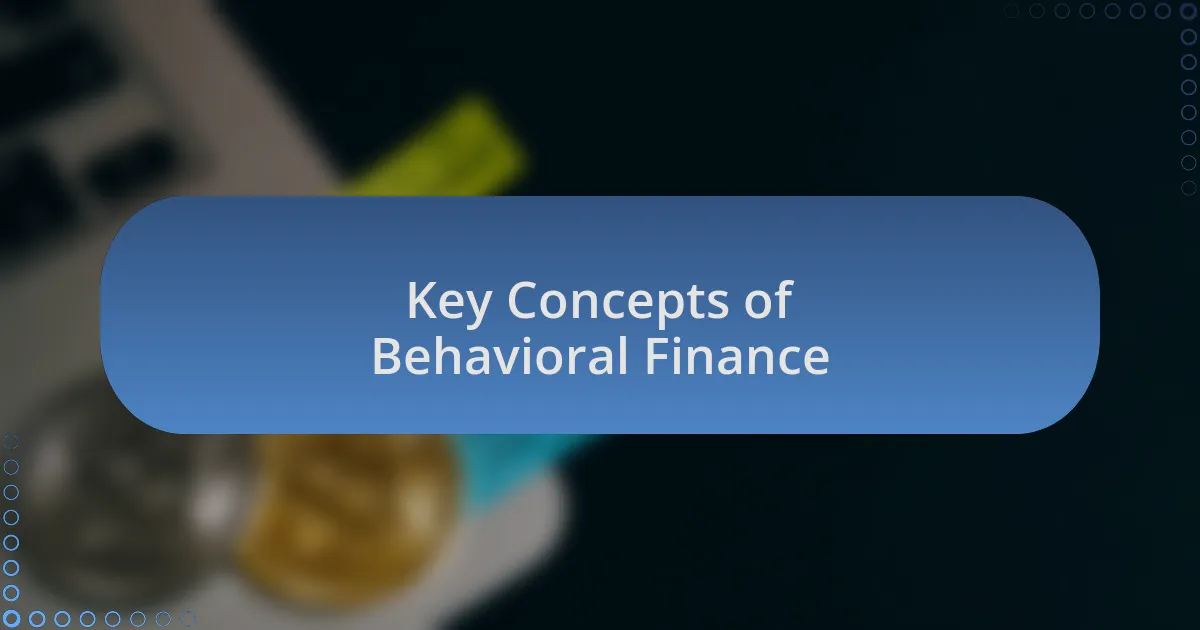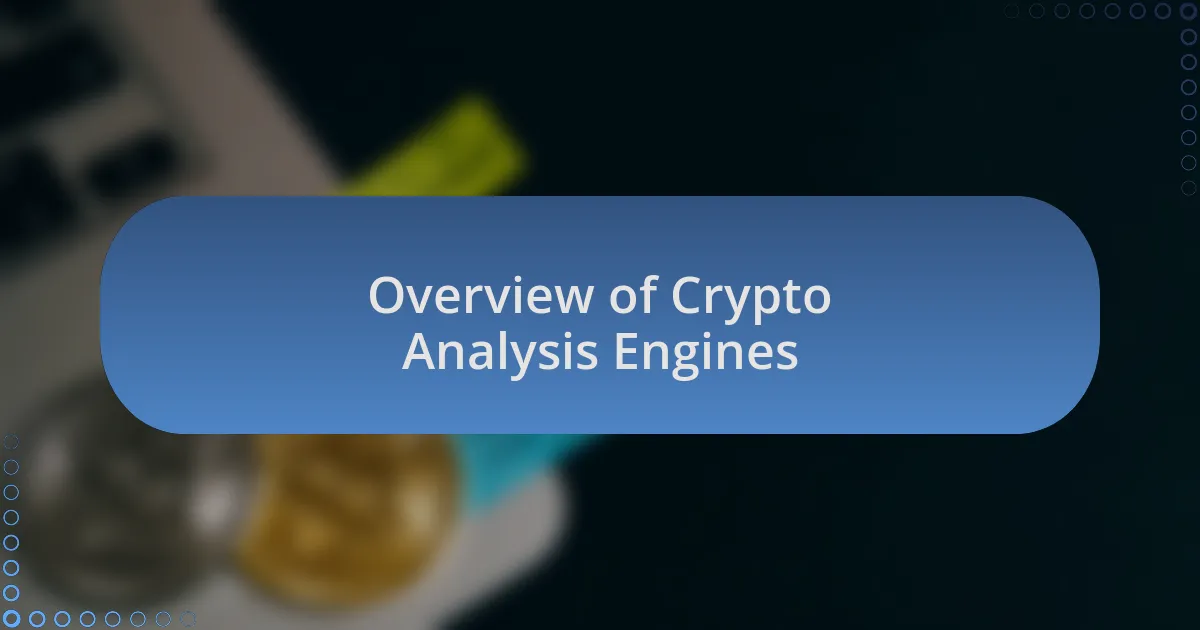Key takeaways:
- Behavioral finance explores how emotions and psychological biases, like loss aversion and overconfidence, influence financial decisions and can lead to regrettable choices.
- Key concepts such as the anchoring effect and herding behavior show how individuals can be swayed by past information and group actions, affecting investment strategies.
- Understanding psychological biases aids in making more rational investment decisions and mitigating risks through self-awareness and emotional discipline.
- Crypto analysis engines provide valuable insights and foster community collaboration, enhancing decision-making through real-time data and shared analytics.

Understanding Behavioral Finance
Behavioral finance is all about understanding how our emotions and psychology influence financial decisions. I often reflect on my own experiences, where I’ve let fear dictate my choices rather than logic. Have you ever made an impulsive investment based on market hype, only to regret it later? That’s behavioral finance in action.
One fascinating aspect of behavioral finance is the concept of heuristics—mental shortcuts we take to simplify decision-making. I remember when I first encountered the idea of “loss aversion,” which suggests we feel the pain of losing money more acutely than the joy of gaining it. This principle resonates with many individuals I’ve spoken to; haven’t we all hesitated to sell a losing asset because it feels too painful?
Another critical element is overconfidence, where investors overestimate their knowledge or ability to predict market trends. I’ve caught myself falling into this trap, convinced that a particular investment is a sure thing, only to learn the hard way that the market doesn’t always behave as expected. Isn’t it interesting how our confidence can lead us to overlook critical data? Understanding these psychological factors can help us make more informed and rational financial choices.

Key Concepts of Behavioral Finance
One of the standout concepts in behavioral finance is the “anchoring effect.” This occurs when investors fixate on a specific piece of information, such as a stock’s previous price, which can skew their judgment. I recall a time I clung to an asset’s old price level, using it as a benchmark for my decisions, even when market conditions shifted significantly. Have you ever found yourself anchored to a price that no longer reflects reality?
Another important idea is “herding behavior,” where individuals mimic the actions of a larger group, often leading to market bubbles or crashes. I remember observing friends jump into popular cryptocurrencies simply because everyone else was doing it, despite the lack of thorough research. It makes me wonder: how often do we let the crowd dictate our decisions, even when our instincts say otherwise?
“Cognitive dissonance” is another intriguing concept, describing the discomfort we feel when our actions contradict our beliefs. I’ve faced moments of dissonance after investing in a project I loved, only to see it falter. Instead of reevaluating my choice, I justified holding on to my investment, hoping for a turnaround. This struggle between reality and self-justification highlights how vital it is to confront our biases for better financial outcomes.

Importance in Investment Decisions
When making investment decisions, understanding our psychological biases can significantly impact the outcomes we achieve. For instance, I once ignored rigorous financial metrics for a cryptocurrency project simply because I was enamored with its brand. It makes me think: how often do we let emotions override logic, swaying our decisions without a solid foundation?
One critical aspect is the tendency to overreact to market news, driven by our emotions. I remember when a major exchange faced security issues; I panicked and sold my holdings at a loss, influenced by the fear of further decline. In hindsight, it’s clear that knee-jerk reactions can lead to regrettable choices. Isn’t it essential to cultivate a calm analysis rather than compulsive responses?
Moreover, recognizing our behavioral tendencies also helps to mitigate risks better. I’ve noticed that when I actively monitor my emotional state during trading, I tend to perform more consistently. This self-awareness prompts a question: what if taking a moment to pause and reflect could be the key to making more rational investment choices?

Overview of Crypto Analysis Engines
Crypto analysis engines serve as powerful tools for navigating the complex landscape of cryptocurrencies. They aggregate vast amounts of data, providing insights into market trends, price movements, and trading volumes, all in real-time. Think about it: how often have you felt overwhelmed by the sheer volume of information available? These engines essentially streamline what could be an exhausting journey into digestible insights.
In my experience, these platforms amplify the effectiveness of my trading strategies. For instance, I once leveraged an analysis engine during a particularly volatile market phase. The engine’s predictive analytics helped me identify patterns I would have otherwise missed, such as significant price movements following regulatory news. It raises an important question: how can we enhance our decision-making by utilizing these sophisticated tools for deeper data analysis?
Not only do these engines help in understanding market dynamics, but they also foster a sense of community by offering shared data and analytics. I often find myself discussing insights gained from these platforms with fellow investors, which enriches my perspective. Have you ever thought about how collaboration, fueled by real-time data, can lead to more informed investment strategies? It’s a game-changing aspect of the crypto space that can’t be overlooked.

Personal Insights on Crypto Investments
Investing in crypto has been a rollercoaster for me. I vividly remember the early days when I jumped on the Bitcoin bandwagon, feeling a mix of excitement and anxiety. It was in those moments of volatility that I learned the importance of emotional discipline. Have you ever caught yourself making impulsive decisions based on fear or greed? Reflecting on those experiences, I’ve realized that maintaining a level-headed approach can be the key to long-term success.
I’ve also noticed how the narratives surrounding cryptocurrencies can influence market movements dramatically. One time, after a major news story broke about a new blockchain partnership, I found myself caught up in the fervor, convinced that the price would soar. However, I took a step back and analyzed the data rather than getting swept away in the hype. By doing so, I avoided what could have been a costly mistake. Does the story behind an asset sometimes draw you in and cloud your judgement, too?
Over time, I’ve developed a habit of regularly reviewing my investment rationale. This self-reflection helps me analyze past decisions—both the wise and rash ones. I always ask myself: what did I learn from each investment? By digesting my experiences, I not only improve my strategies but also build confidence in my ability to navigate the markets. How often do you reflect on your investment journey? Embracing this practice can truly transform the way we approach crypto investing.